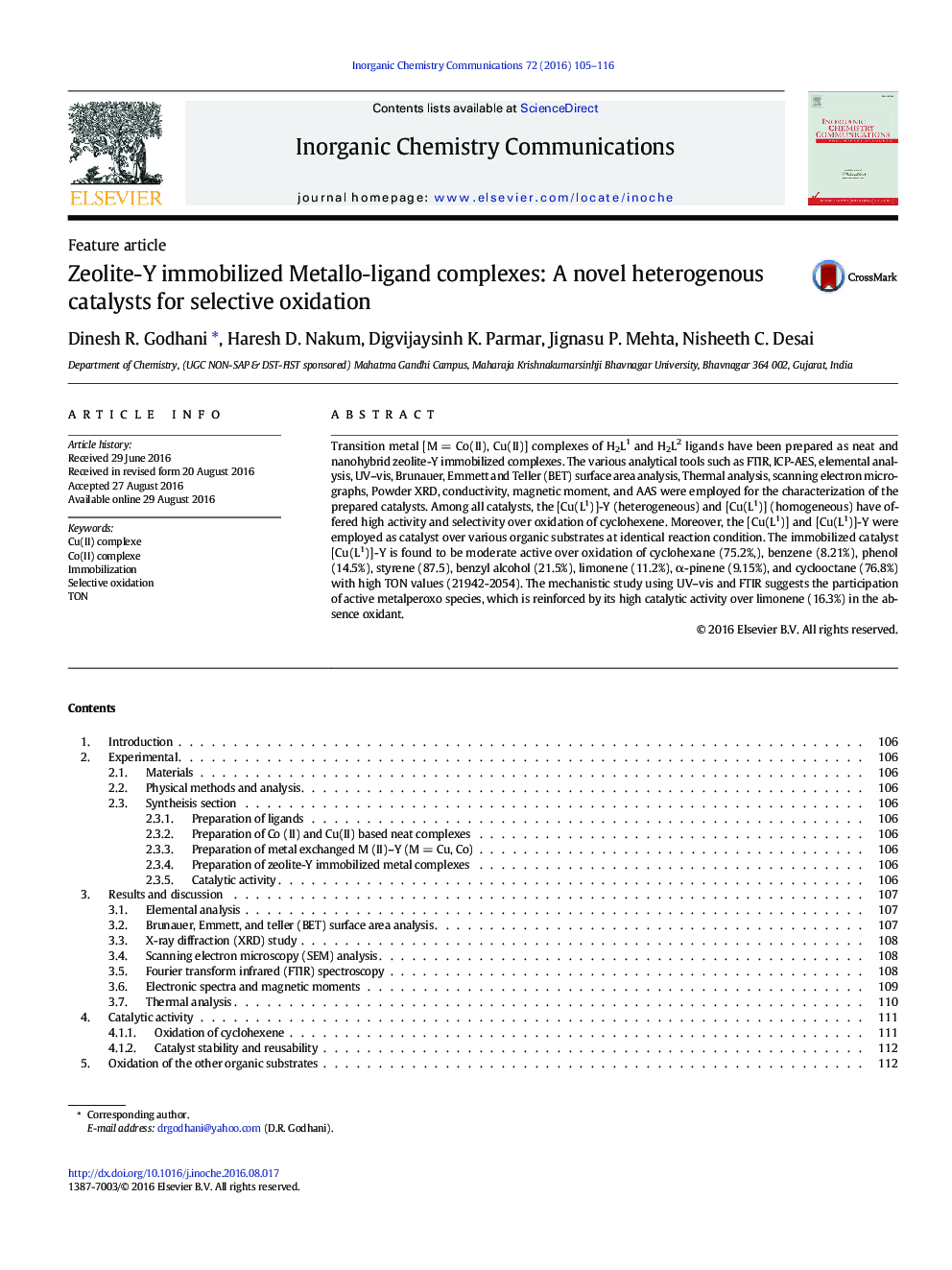| Article ID | Journal | Published Year | Pages | File Type |
|---|---|---|---|---|
| 1301590 | Inorganic Chemistry Communications | 2016 | 12 Pages |
•A Co(II) and Cu(II) complexes are immobilized within the nanopores of zeolite-Y.•Encapsulation is buttressed by ICP-OES, BET, FTIR, UV–Vis and TG analysis.•These complexes mainly promotes allylic oxidation of organic substrates.•The absence of metal ion leaching during catalytic study is reinforced by AAS.
Transition metal [M = Co(II), Cu(II)] complexes of H2L1 and H2L2 ligands have been prepared as neat and nanohybrid zeolite-Y immobilized complexes. The various analytical tools such as FTIR, ICP-AES, elemental analysis, UV–vis, Brunauer, Emmett and Teller (BET) surface area analysis, Thermal analysis, scanning electron micrographs, Powder XRD, conductivity, magnetic moment, and AAS were employed for the characterization of the prepared catalysts. Among all catalysts, the [Cu(L1)]-Y (heterogeneous) and [Cu(L1)] (homogeneous) have offered high activity and selectivity over oxidation of cyclohexene. Moreover, the [Cu(L1)] and [Cu(L1)]-Y were employed as catalyst over various organic substrates at identical reaction condition. The immobilized catalyst [Cu(L1)]-Y is found to be moderate active over oxidation of cyclohexane (75.2%,), benzene (8.21%), phenol (14.5%), styrene (87.5), benzyl alcohol (21.5%), limonene (11.2%), α-pinene (9.15%), and cyclooctane (76.8%) with high TON values (21942-2054). The mechanistic study using UV–vis and FTIR suggests the participation of active metalperoxo species, which is reinforced by its high catalytic activity over limonene (16.3%) in the absence oxidant.
Graphical abstract✓A Co(II) and Cu(II) complexes are successfully immobilized with minimum concentrations (2–3%) within the nanopores of zeolite-Y.✓Immobilization is buttressed by ICP-OES, BET, FTIR, Uv-Vis and TG analysis.✓The synthesized immobilized complexes proficiently catalyzed the allylic oxidation (86.6–56.5%, TON 21708-11808) of cyclohexene compared to neat complexes (76.1–40.5%, TON: 545-332).✓Moreover, the [Cu(L1)]-Y is found highly selective for oxidation of other organic substrate with high TON value (21942-2054).✓The absence of metal ion and/or metal complex leaching during catalytic study is reinforced by AAS.Figure optionsDownload full-size imageDownload as PowerPoint slide
